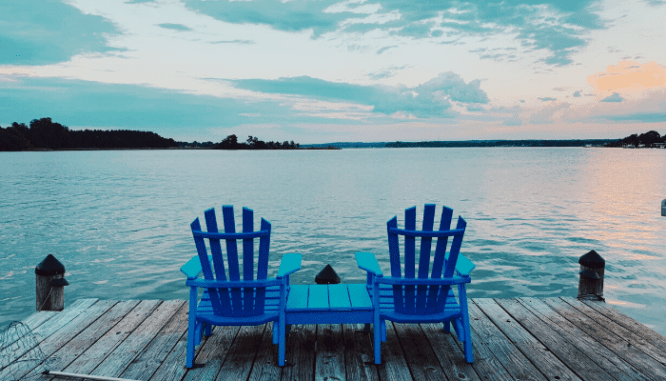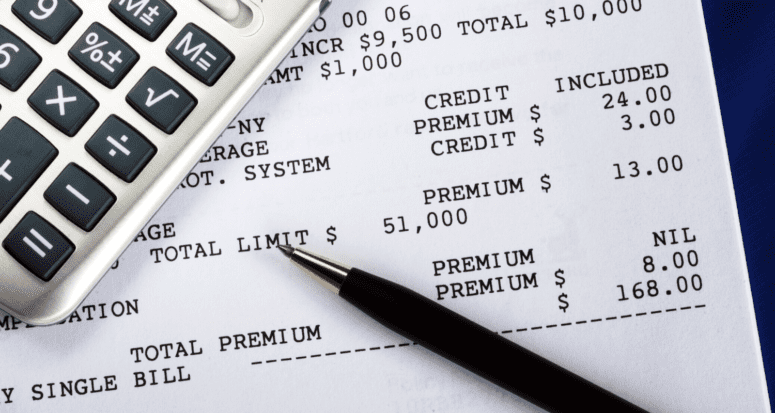12 Factors That Jack Up Your Homeowners Insurance (And What to Do About It)
- Published on
- 7 min read
-
 Emma Diehl Contributing AuthorClose
Emma Diehl Contributing AuthorClose Emma Diehl Contributing Author
Emma Diehl Contributing AuthorEmma's work has been featured in Huffington Post, NPR and XOJane. When she's not combing her neighborhood for open houses, she's writing about technology, real estate or data.
Homeowners insurance protects you in the event of fire, theft, or otherwise unlikely yet high-risk scenarios you don’t want to gamble on. You’ll need coverage, but when you break down your housing costs, the price of your premium makes you wonder: Why is my homeowners insurance so high, and is there anything I can do it lower it?
On average, Americans pay $1,288 a year for homeowners insurance, but it could run as high as $2,800+ in states like Florida and Louisiana. Here’s the good news: you’ve got more than one way to reduce the insurance costs on your home. By simply raising the deductible $1,000, a homeowner could save 25% on the average insurance policy.
However, you also don’t want to get too budget-happy with your homeowners policy. Keep slashing prices, and you could end up with flimsy coverage — like residents in California who didn’t know their policy excluded wildfires until their homes were destroyed by one.
Here are 12 things insurance experts say could be jacking up your homeowners insurance costs and what you can do to lower it without risking major policy gaps.

1. You’re with the wrong insurance company.
You could pay higher premiums on your home insurance just because you’re with a provider that charges more than its competitors. According to a US News study, the following companies charge the most expensive homeowners insurance rates on average:
- Farmers Insurance ($158/month)
- Allstate ($153/month)
- State Farm ($129.58/month)
A separate Bankrate analysis found that you’ll find the most affordable homeowners insurance options from:
- Amica ($75.25/month)
- Nationwide ($79.02/month)
- Young Alfred ($83.88/month)
However, these are averages and estimates. If you take all the factors that go into your individual policy, rates will vary based on your needs. For example, the larger your home, the more your home insurance policy will cost.
Keep in mind, too, that you can expect a different level of service based on the cost of your policy and the type of company you work with.
Newer, more affordable insurers such as Lemonade or esurance are disrupting the market with lower premiums (home insurance is an average $25/month with Lemonade), but you can sacrifice some hallmarks of traditional home insurance.
Those lower home insurance premiums mean no brick and mortar locations to reach out to, and in the case of Lemonade, it’s only offered in a few states and you can’t bundle insurance policies. That means you can’t combine an auto and home insurance policy for savings, or pop by an office when you have a question.
Traditional home insurance companies may offer more individualized attention (such as local offices or 24-hour call centers to help you manage claims), but for a higher price.
How to lower your costs: Shop around for a better deal.
“I’m a big fan of getting people to compete for your business,” says Kyle Bender, a top performing real estate agent in Charlotte, North Carolina. With nearly 300 real estate transactions under his belt, Bender recommends getting quotes on similar policies from at least 3 insurance providers.
The more information you have, the easier it will be to decide which policy is right for you. But save wheeling and dealing or price matches for another day — asking one company to match another’s lower rate doesn’t fly in the insurance world.
2. You live in a high-crime area.
If you live in a high-crime area, chances are you’ll pay a higher homeowners insurance premium. One of the ways insurance companies determine crime rate is how much they’ve paid out in claims for theft, burglary, or vandalism in the area. This rate varies by neighborhood, street, and could even fluctuate down to your specific block. While you can’t peak behind the insurance company crime rate algorithms, you can get an idea of the safety score of your area using an online tool like AreaVibes.
How to lower your costs: Install a security system.
On average, a home security system will cost $694 to install, but a system with central monitoring can save up to 10% on your annual policy.
The security system market has grown in the past few years, giving homeowners an array of options — from classic monitoring systems to sleekly connected smart home tech. ADT’s been in the security industry for close to 150 years, and its plans come with free hardware and installation starting at $28.99/month. If you’re looking for a no-contract system, Ring’s 5-piece system costs $140 and is Wirecutter-approved.
3. Your policy has a low deductible.
A low deductible policy means in the event of a claim, you’ll pay less out of pocket before your insurance starts to cover it. Say you’ve got a low deductible plan and a tree crashes through your roof. The bill is $10,000 for repair, but with a low deductible, such as $500, you need only pay the deductible and your policy will cover the additional $9,500.
But if you’ve got a substantial emergency fund for your home, you could consider the pros and cons of switching plans to a high deductible. The same scenario above with a high deductible would mean you’d pay more, possibly double or triple, of the total cost before insurance foots the bill — but potentially lower premiums month to month.
How to lower your costs: Switch your coverage to a high-deductible plan.
Increasing your deductible from $500 to $1,000 can save you up to 25% on your homeowner’s insurance premium. Just make sure you’ve got healthy reserves on hand (at least three months’ worth of mortgage payments, utilities, and taxes) in the event of an emergency that can cover repairs up to the new deductible.

4. You live in a flood zone.
If your home is located in a flood zone, there’s no getting around shelling out for flood insurance, says Justin Royster, Certified Insurance Counselor and president of RDR Insurance Services. Flood insurance is regulated by the National Flood Insurance Program, so standard rates won’t change if you shop around for a policy. On average, NFIP policies cost $700 a year.
How to lower your costs: Get a quote for private insurance.
While most flood insurance is federally regulated, you can also buy private flood insurance on the market. Private insurance can offer more coverage in high-risk areas in the event of a flood.
Depending on the risk level of your area, you might find private offerings to be more affordable. The drawback of private insurance is if your area becomes higher risk over time, your provider can choose to not renew your policy, which could result in higher rates.
“The private company can always increase the rate after the first year,” Royster says, “but you’ll get grandfathered into the NFIP program.”
5. You have multiple insurance policies
If you have multiple policies, such as for your car, motorcycle, or personal property, all from different insurance providers, you could be missing out on the opportunity to save.
How to lower your costs: Bundle your plans.
Using one insurance company for two or more policies can lead to up to 25% off your home insurance. It’s also easier to keep track of bills and coverage if it’s all under the umbrella of one provider.
6. Your house is creeping up in age.
The age of your home can greatly impact your premium. “You can’t get replacement costs on roofs older than 15 years,” says Royster. “So the cost calculated would be the actual cash value, and that will drive up the cost.”
In addition to the overall age of the home, the age of the roof, the age of the plumbing, HVAC, and electrical in your home can impact the cost of your insurance.
Just how much? A home that’s 50 years old or more will see on average a 3% higher coverage rate compared to newer homes in the area.
How to lower your costs: Replace aging systems.
Replacing an old roof or water heater can lower your insurance premium. If you’re faced with multiple items to replace, Royster recommends knocking out the biggest-ticket items first for maximum impact on your annual payments. “I’d replace the roof first, then check in on your policy to get a lower rate.”
Installing a new roof with impact-resistant materials can net you between 5% and 20% off your insurance policy premium. The average cost of a new roof is $7,211, so depending on the cost of your insurance, you could break even in a few years, and stay dry with a new roof. That doesn’t even factor in the costs you’re saving by not deferring maintenance — you’re taking care of issues now that will likely quadruple in costs down the line.

7. Your fire suppression rating is low.
If your home is close to a fire station, or even a fire hydrant, you’ll pay less for your insurance. You’ll save more if the station is permanently staffed versus volunteer-run.
How to lower your costs: Ask for a second opinion on your scale.
Counties rate homes using a 1-to-10 scale that categorizes a home’s fire protection class. The scale is based on a home’s proximity to fire stations, and where your home falls on that scale will determine whether you could qualify for a better rate.
When Bender purchased a property recently, he had a hunch the county hadn’t rated the area for quite some time. “I had another insurance agent come in and rate the proximity,” Bender says. “That agent said it wasn’t that far and rated it completely different. That challenge to the rating ended up saving me a lot of money.”
8. You have a poor credit score.
A stellar credit score shows insurers that you’re likely to pay premiums on time. It also shows you’re not a risky spender and you’re less likely to engage in risky home behavior that results in filing a claim. Poor credit history can increase your insurance by 30% or more.
How to lower your costs: Get that credit score up!
Insurance premiums use a credit-based insurance (CBI) score to determine a homeowner’s dependability. Negative influences on your CBI include:
- Past-due accounts
- A high volume of recent credit applications
- Credit cards or loans in collect
- High credit usage (which could show that you’re overextended)
To clean up your credit, settle any debts that are in collection, pay down outstanding loan balances, and avoid taking on any additional debt. As your score improves, you can ask your insurance provider to revisit your policy.
9. You’re not checking in on your policy regularly.
Most homeowners elect to pay their insurance annually, and then the “set it and forget” nature of e-bills makes it easy to overlook any changes to your policy. “Most of the time, your insurance will go up just like taxes,” Bender says, “But I recommend evaluating that policy every year.”
How to lower your costs: Go over the policy with your agent.
If you see a steep increase in your premium compared to the previous year, it’s time to get together with your agent and review the policy line by line for opportunities to save.
If there’s not much your agent can do to lower the bill, it could be time to get quotes or cancel your policy for a better deal. “You can always prorate the money that your policy didn’t use and get out of the contract,” Bender says.

10. You have a pool.
Nothing beats a dive into a cool pool on a warm day, but the premium your pool puts on your policy could make you sweat. Some companies won’t even insure home pools with diving boards or water slides, says Royster.
That can depend on your market. In areas where pools are the norm, it could add between $50 and $75 to your annual premium.
How to lower your costs: Add safety precautions to the pool area.
A pool will require additional liability protection tacked onto your homeowners policy, but by adding some safety measures, you can save money on your policy. “Insurance companies want to make sure there’s a fence around the pool and no diving board,” says Royster.
Reason 11: You have too much coverage.
Too much coverage isn’t common, but in Royster’s 22 years of experience in insurance, he explains some homeowners misunderstand the value of their property, leading to inflated premiums. “You’re insuring the structure; you don’t need to insure it at market value.”
How to lower your costs: Insure your home for replacement costs.
Work with your insurance agent to use a replacement-cost estimator that determines only what it costs to rebuild your home with materials of similar quality.
12: You’ve been bouncing around insurance companies.
Chasing down cheaper home insurance policies will help you, but only to a point. If you’ve been jumping from insurance provider to insurance provider on an annual basis, you could be saving money every year, but losing in the long term.
How to lower your costs: Stick with an agency for discounts.
If you stay with an insurance company for five years or more, you could be eligible for a loyalty discount. Loyalty discounts are typically around 5%, says Royster, and homeowners can ask for them after a few years of continuous claims-free coverage.

Too good to be true, or perfect for you? How to find affordable (but suitable) coverage
In the complicated world of home insurance, finding the sweet spot of savings versus coverage can take an expert eye. Luckily, we’ve got just that. Here’s what the pros say will help sniff out the best deal:
Check the provider’s reputation.
Royster recommends homeowners search for reviews on each company they’re interested in. The National Association of Insurance Commissioners, JD Power & Associates, and your state department of insurance all provide reviews and public complaints of each provider.
Give insurance companies as much information as possible to get the best policy.
In their rush to get a quick quote, homeowners miss out on discounts or sign up for a policy that fails to offer the coverage they need, Royster says.
Fill out a full application and chat with an insurance agent to make sure you’re getting all the discounts you qualify for upfront. If you don’t take the extra time for a proper quote, you might forget things like items of value in the home or other features that’ll result in a coverage gap.
Don’t skimp on liability insurance.
If someone gets hurt on your property, you can be held liable for damages, says Bender. If you have a pool or trampoline, this liability increases.
Cheaper insurance policies might skimp out on liability coverage, which means you’re on the hook to cover the costs of someone slipping on your front lawn, or breaking an arm on the trampoline. When getting quotes from agencies, make sure you ask about liability coverage on your home.
You might not want to think about everything that could go wrong with your home, but when something inevitably does, you’ll be glad to have insurance. The thing is, your policy doesn’t have to be astronomically high to get good coverage. Shop around, be proactive about creating the best policy from the start, follow up when circumstances change, and ask about discounts for a lower premium that won’t leave you exposed to any risk.
Header Image Source: (JohnKwan/ Shutterstock)
